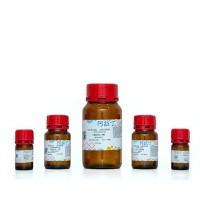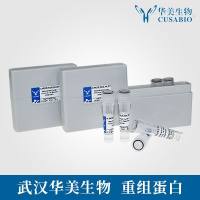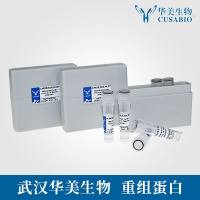Transplantation Models to Characterize the Mechanisms of Stem Cell–Induced Islet Regeneration
互联网
- Abstract
- Table of Contents
- Materials
- Figures
- Literature Cited
Abstract
This unit describes our current knowledge regarding the isolation human bone marrow?derived progenitor cells for the paracrine stimulation of islet regeneration after transplantation into immunodeficient mouse models of diabetes. By using high aldehyde dehydrogenase (ALDHhi ) activity, a conserved function in multiple stem cell lineages, a mixed population of hematopoietic, endothelial, and mesenchymal progenitor cells can be efficiently purified using flow cytometry. We describe in vitro approaches to characterize and expand these distinct cell types. Importantly, these cell types can be transplanted into immunodeficient mice rendered beta?cell deficient by streptozotocin (STZ) treatment, in order monitor functional recovery from hyperglycemia and to characterize endogenous islet regeneration via paracrine mechanisms. Herein, we provide detailed protocols for: (1) isolation and characterization of ALDHhi cells for the establishment of hematopoietic and multipotent?stromal progenitor lineages; (2) intravenous and intrapancreatic transplantation of human stem cell subtypes for the quantification of glycemic recovery in STZ?treated immunodeficient mice; and (3) immunohistochemical characterization of islet recovery via the stimulation of islet neogenic, beta?cell proliferative, and islet revascularization programs. Collectively, these systems can be used to support the pre?clinical development of human progenitor cell?based therapies to treat diabetes via islet regeneration. Curr. Protoc. Stem Cell Biol . 26:2B.4.1?2B.4.35. © 2013 by John Wiley & Sons, Inc.
Keywords: aldehyde dehydrogenase; stem cells; bone marrow; transplantation; hematopoietic progenitor cells; multipotent stromal cells; islet regeneration; diabetes
Table of Contents
- Introduction
- Basic Protocol 1: Isolation and Characterization of Bone Marrow Progenitor Cells with High Aldehyde Dehydrogenase Activity
- Support Protocol 1: Phenotypic Analysis of ALDHhi Progenitor Cells
- Support Protocol 2: Colony‐Forming Cell Assays and Expansion
- Basic Protocol 2: Transplantation of ALDHhi Cells into Hyperglycemic Mice
- Alternate Protocol 1: Intrapancreatic Transplantation of ALDHhi or ALDHlo Progenitor Cells
- Support Protocol 3: Mouse Euthanasia and Tissue Dissection
- Support Protocol 4: Serum Insulin Quantification Using ELISA
- Support Protocol 5: Analysis of Human Cell Engraftment by Flow Cytometry
- Basic Protocol 3: Immunohistochemical Analysis of Islet Regeneration
- Support Protocol 6: Quantification of Islet Size, Islet Number, and Beta Cell Mass
- Support Protocol 7: Analyses of Human Cell Association with Islets
- Support Protocol 8: Analyses of Islet Blood Vessel Density
- Support Protocol 9: Analyses of Islet Cell Proliferation
- Support Protocol 10: Analysis of Islet Association with CK19+ Ducts
- Commentary
- Literature Cited
- Figures
- Tables
Materials
Basic Protocol 1: Isolation and Characterization of Bone Marrow Progenitor Cells with High Aldehyde Dehydrogenase Activity
Materials
Support Protocol 1: Phenotypic Analysis of ALDHhi Progenitor Cells
Materials
Table 2.0.1 MaterialsAntibody Clones, Fluorochromes, and Amounts Used to Analyze Hematopoietic Progenitor Cell Surface Marker Expression
Support Protocol 2: Colony‐Forming Cell Assays and Expansion
Materials
Basic Protocol 2: Transplantation of ALDHhi Cells into Hyperglycemic Mice
Materials
Alternate Protocol 1: Intrapancreatic Transplantation of ALDHhi or ALDHlo Progenitor Cells
Materials
Support Protocol 3: Mouse Euthanasia and Tissue Dissection
Materials
Support Protocol 4: Serum Insulin Quantification Using ELISA
Materials
Support Protocol 5: Analysis of Human Cell Engraftment by Flow Cytometry
Materials
Basic Protocol 3: Immunohistochemical Analysis of Islet Regeneration
Materials
Support Protocol 6: Quantification of Islet Size, Islet Number, and Beta Cell Mass
Materials
Support Protocol 7: Analyses of Human Cell Association with Islets
Materials
Support Protocol 8: Analyses of Islet Blood Vessel Density
Materials
Support Protocol 9: Analyses of Islet Cell Proliferation
Materials
Support Protocol 10: Analysis of Islet Association with CK19+ Ducts
Materials
|
Figures
-
Figure 2.B0.1 Schematic representation for the isolation and characterization of bone marrow–derived ALDHhi mixed progenitor cells. Human bone marrow mononuclear cells (MNC) are isolated by Ficoll‐Hypaque centrifugation, and incubated with Aldefluor reagent. Using fluorescence activated cell sorting, MNC are purified into ALDHlo cell and ALDHhi cell populations based on relative ALDH activity. Cell‐surface phenotype is analyzed by flow cytometry, and clonal colony‐forming unit assays are performed to calculate relative frequency of hematopoietic, endothelial, or mesenchymal progenitor cells. ALDHhi progenitor cells can be expanded efficiently in lineage‐specific culture. ALDHhi mixed progenitor cells or their expanded progeny can then be transplanted into the tail vein or into the pancreas of hyperglycemic NOD/SCID mice to assess their capacity to stimulate endogenous islet regeneration. View Image -
Figure 2.B0.2 In vivo model of human progenitor cell–stimulated beta cell regeneration after transplantation into hyperglycemic mice. NOD/SCID mice are intraperitoneally injected with 35 mg/kg streptozotocin (STZ) from days 1 to 5 to induce beta‐cell deletion and subsequent hyperglycemia. On day 10, mice with systemic blood glucose levels between 15 and 25 mmol/liter are sublethally irradiated (300 cGy) and transplanted with human bone marrow–derived progenitor cells. Blood glucose concentrations are monitored weekly for 42 days. At a time point 24 hr prior to euthanasia, mice are intraperitoneally injected with 200 µg EdU to label dividing cells, and a fasted glucose tolerance test is performed. On day 42, murine blood is collected by cardiac puncture and serum is separated by centrifugation and cryopreserved for serum insulin quantification by ELISA. Following euthanasia, bone marrow is collected for flow cytometry, while the spleen and pancreas are collected and segmented for the analysis of human cell engraftment by flow cytometry, or frozen in O.C.T. (Optimal Cutting Temperature) compound for subsequent sectioning and immunohistochemical analysis. View Image -
Figure 2.B0.3 Intrapancreatic transplantation surgery. Representative photographs and step‐by‐step description of the intrapancreatic transplantation procedure. View Image -
Figure 2.B0.4 Immunohistochemical analysis of islet regeneration. Human progenitor cell–transplanted NOD/SCID mice are euthanized, and the splenic portion of the pancreas frozen in OCT. Using a cryostat, the pancreas is sectioned into 10‐µm sections, with three sections (150 µm apart) per glass slide. Pancreatic tissue sections are analyzed for: islet size, islet number, and beta cell mass (staining for insulin); human cell engraftment (co‐staining for HLA‐A,B,C and insulin); islet vascularization (co‐staining for insulin and vWF or CD31); beta cell proliferation (co‐staining for insulin and EdU); and islet location (co‐staining for insulin and CK19). View Image
Videos
Literature Cited
| Assady, S., Maor, G., Amit, M., Itskovitz‐Eldor, J., Skorecki, K.L., and Tzukerman, M. 2001. Insulin production by human embryonic stem cells. Diabetes 50:1691‐1697. | |
| Bell, G.I., Meschino, M.T., Hughes‐Large, J.M., Broughton, H.C., Xenocostas, A., and Hess, D.A. 2012a. Combinatorial human progenitor cell transplantation optimizes islet regeneration through secretion of paracrine factors. Stem Cells Dev. 21:1863‐1876. | |
| Bell, G.I., Broughton, H.C., Levac, K.D., Allan, D.A., Xenocostas, A., and Hess, D.A. 2012b. Transplanted human bone marrow progenitor subtypes stimulate endogenous islet regeneration and revascularization. Stem Cells Dev. 21:97‐109. | |
| Bell, G.I., Putman, D.M., Hughes‐Large, J.M., and Hess, D.A. 2012c. Intrapancreatic delivery of human umbilical cord blood aldehyde dehydrogenase‐producing cells promotes islet regeneration. Diabetologia 55:1755‐1760. | |
| Bonner‐Weir, S., Baxter, L.A., Schuppin, G.T., and Smith, F.E. 1993. A second pathway for regeneration of adult exocrine and endocrine pancreas. A possible recapitulation of embryonic development. Diabetes 42:1715‐1720. | |
| Bonner‐Weir, S. and Weir, G.C. 2005. New sources of pancreatic beta‐cells. Nat. Biotechnol. 23:857‐861. | |
| Capoccia, B.J., Robson, D.L., Levac, K.D., Maxwell, D.J., Hohm, S.A., Neelamkavil, M.J., Bell, G.I., Xenocostas, A., Link, D.C., Piwnica‐Worms, D., Nolta, J.A., and Hess, D.A. 2009. Revascularization of ischemic limbs after transplantation of human bone marrow cells with high aldehyde dehydrogenase activity. Blood 113:5340‐5351. | |
| Ciceri, F. and Piemonti, L. 2012. Bone marrow and pancreatic islets: An old story with new perspectives. Cell Transplant. 19:1511‐1522. | |
| Coligan, J.E., Kruisbeek, A.M., Margulies, D.H., Shevach, E.M., and Strober, W. (eds.). 2013. Current Protocols in Immunology. John Wiley & Sons, New York. | |
| D'Amour, K.A., Agulnick, A.D., Eliazer, S., Kelly, O.G., Kroon, E., and Baetge, E.E. 2005. Efficient differentiation of human embryonic stem cells to definitive endoderm. Nat. Biotechnol. 23:1534‐1541. | |
| D'Amour, K.A., Bang, A.G., Eliazer, S., Kelly, O.G., Agulnick, A.D., Smart, N.G., Moorman, M.A., Kroon, E., Carpenter, M.K., and Baetge, E.E. 2006. Production of pancreatic hormone–expressing endocrine cells from human embryonic stem cells. Nat. Biotechnol. 24:1392‐1401. | |
| Donovan, J. and Brown, P. 2006a. Parenteral injections. Curr. Protoc. Immunol. 73:1.6.1‐1.6.10. | |
| Donovan, J. and Brown, P. 2006b. Euthanasia. Curr. Protoc. Immunol. 73:1.8.1‐1.8.4. | |
| Dor, Y., Brown, J., Martinez, O.I., and Melton, D.A. 2004. Adult pancreatic beta‐cells are formed by self‐duplication rather than stem‐cell differentiation. Nature 429:41‐46. | |
| Hakonen, E., Ustinov, J., Mathijs, I., Palgi, J., Bouwens, L., Miettinen, P.J., and Otonkoski, T. 2011. Epidermal growth factor (EGF)‐receptor signalling is needed for murine beta cell mass expansion in response to high‐fat diet and pregnancy but not after pancreatic duct ligation. Diabetologia 54:1735‐1743. | |
| Halban, P.A., German, M.S., Kahn, S.E., and Weir, G.C. 2012. Current status of islet cell replacement and regeneration therapy. J. Clin. Endocrinol. Metab. 95:1034‐1043. | |
| Haller, M.J., Wasserfall, C.H., Hulme, M.A., Cintron, M., Brusko, T.M., McGrail, K.M., Sumrall, T.M., Wingard, J.R., Theriaque, D.W., Shuster, J.J., Atkinson, M.A., and Schatz, D.A. 2011. Autologous umbilical cord blood transfusion in young children with type 1 diabetes fails to preserve C‐peptide. Diabetes Care 34:2567‐2569. | |
| Hathout, E., Lakey, J., and Shapiro, J. 2003. Islet transplant: An option for childhood diabetes? Arch. Dis. Child. 88:591‐594. | |
| Hess, D., Li, L., Martin, M., Sakano, S., Hill, D., Strutt, B., Thyssen, S., Gray, D.A., and Bhatia, M. 2003. Bone marrow‐derived stem cells initiate pancreatic regeneration. Nat. Biotechnol. 21:763‐770. | |
| Hess, D.A., Meyerrose, T.E., Wirthlin, L., Craft, T.P., Herrbrich, P.E., Creer, M.H., and Nolta, J.A. 2004. Functional characterization of highly purified human hematopoietic repopulating cells isolated according to aldehyde dehydrogenase activity. Blood 104:1648‐1655. | |
| Hess, D.A., Wirthlin, L., Craft, T.P., Herrbrich, P.E., Hohm, S.A., Lahey, R., Eades, W.C., Creer, M.H., and Nolta, J.A. 2006. Selection based on CD133 and high aldehyde dehydrogenase activity isolates long‐term reconstituting human hematopoietic stem cells. Blood 107:2162‐2169. | |
| Inada, A., Nienaber, C., Katsuta, H., Fujitani, Y., Levine, J., Morita, R., Sharma, A., and Bonner‐Weir, S. 2008. Carbonic anhydrase II‐positive pancreatic cells are progenitors for both endocrine and exocrine pancreas after birth. Proc. Natl. Acad. Sci. U.S.A. 105:19915‐19919. | |
| Juhl, K., Bonner‐Weir, S., and Sharma, A. 2012. Regenerating pancreatic beta‐cells: Plasticity of adult pancreatic cells and the feasibility of in‐vivo neogenesis. Curr. Opin. Organ Transplant. 15:79‐85. | |
| Kaczorowski, D.J., Patterson, E.S., Jastromb, W.E., and Shamblott, M.J. 2002. Glucose‐responsive insulin‐producing cells from stem cells. Diabetes Metab. Res. Rev. 18:442‐450. | |
| Keenan, H.A., Sun, J.K., Levine, J., Doria, A., Aiello, L.P., Eisenbarth, G., Bonner‐Weir, S., and King, G.L. 2011. Residual insulin production and pancreatic ss‐cell turnover after 50 years of diabetes: Joslin Medalist Study. Diabetes 59:2846‐2853. | |
| Kim, H., Toyofuku, Y., Lynn, F.C., Chak, E., Uchida, T., Mizukami, H., Fujitani, Y., Kawamori, R., Miyatsuka, T., Kosaka, Y., Yang, K., Honig, G., van der Hart, M., Kishimoto, N., Wang, J., Yagihashi, S., Tecott, L.H., Watada, H., and German, M.S. 2010. Serotonin regulates pancreatic beta cell mass during pregnancy. Nat. Med. 16:804‐808. | |
| Kondo, M., Wagers, A.J., Manz, M.G., Prohaska, S.S., Scherer, D.C., Beilhack, G.F., Shizuru, J.A., and Weissman, I.L. 2003. Biology of hematopoietic stem cells and progenitors: Implications for clinical application. Annu. Rev. Immunol. 21:759‐806. | |
| Kroon, E., Martinson, L.A., Kadoya, K., Bang, A.G., Kelly, O.G., Eliazer, S., Young, H., Richardson, M., Smart, N.G., Cunningham, J., Agulnick, A.D., D'Amour, K.A., Carpenter, M.K., and Baetge, E.E. 2008. Pancreatic endoderm derived from human embryonic stem cells generates glucose‐responsive insulin‐secreting cells in vivo. Nat. Biotechnol. 26:443‐452. | |
| Lee, R.H., Seo, M.J., Reger, R.L., Spees, J.L., Pulin, A.A., Olson, S.D., and Prockop, D.J. 2006. Multipotent stromal cells from human marrow home to and promote repair of pancreatic islets and renal glomeruli in diabetic NOD/scid mice. Proc. Natl. Acad. Sci. U.S.A. 103:17438‐17443. | |
| Nostro, M.C., Sarangi, F., Ogawa, S., Holtzinger, A., Corneo, B., Li, X., Micallef, S.J., Park, I.H., Basford, C., Wheeler, M.B., Daley, G.Q., Elefanty, A.G., Stanley, E.G., and Keller, G. 2011. Stage‐specific signaling through TGFbeta family members and WNT regulates patterning and pancreatic specification of human pluripotent stem cells. Development 138:861‐871. | |
| Oberholzer, J., Shapiro, A.M., Lakey, J.R., Ryan, E.A., Rajotte, R.V., Korbutt, G.S., Morel, P., and Kneteman, N.M. 2003. Current status of islet cell transplantation. Adv. Surg. 37:253‐282. | |
| Prockop, D.J. 1997. Marrow stromal cells as stem cells for nonhematopoietic tissues. Science 276:71‐74. | |
| Putman, D.M., Liu, K.Y., Broughton, H.C., Bell, G.I., and Hess, D.A. 2012. Umbilical cord blood‐derived aldehyde dehydrogenase‐expressing progenitor cells promote recovery from acute ischemic injury. Stem Cells 30:2248‐2260. | |
| Rieck, S. and Kaestner, K.H. 2010. Expansion of beta‐cell mass in response to pregnancy. Trends Endocrinol. Metab. 21:151‐158. | |
| Shapiro, A.M., Lakey, J.R., Ryan, E.A., Korbutt, G.S., Toth, E., Warnock, G.L., Kneteman, N.M., and Rajotte, R.V. 2000. Islet transplantation in seven patients with type 1 diabetes mellitus using a glucocorticoid‐free immunosuppressive regimen. N. Engl. J. Med. 343:230‐238. | |
| Shapiro, A.M., Ryan, E.A., and Lakey, J.R. 2001. Diabetes. Islet cell transplantation. Lancet 358 Suppl:S21. | |
| Snarski, E., Milczarczyk, A., Torosian, T., Paluszewska, M., Urbanowska, E., Krol, M., Boguradzki, P., Jedynasty, K., Franek, E., and Wiktor‐Jedrzejczak, W. 2011. Independence of exogenous insulin following immunoablation and stem cell reconstitution in newly diagnosed diabetes type I. Bone Marrow Transplant. 46:562‐566. | |
| Storms, R.W., Trujillo, A.P., Springer, J.B., Shah, L., Colvin, O.M., Ludeman, S.M., and Smith, C. 1999. Isolation of primitive human hematopoietic progenitors on the basis of aldehyde dehydrogenase activity. Proc. Natl. Acad. Sci. U.S.A. 96:9118‐9123. | |
| Storms, R.W., Green, P.D., Safford, K.M., Niedzwiecki, D., Cogle, C.R., Colvin, O.M., Chao, N.J., Rice, H.E., and Smith C.A. 2005. Distinct hematopoietic progenitor compartments are delineated by the expression of aldehyde dehydrogenase and CD34. Blood 106:95‐102. | |
| Urban, V.S., Kiss, J., Kovacs, J., Gocza, E., Vas, V., Monostori, E., and Uher, F. 2008. Mesenchymal stem cells cooperate with bone marrow cells in therapy of diabetes. Stem Cells 26:244‐253. | |
| Xu, X., D'Hoker, J., Stange, G., Bonne, S., De Leu, N., Xiao, X., Van de Casteele, M., Mellitzer, G., Ling, Z., Pipeleers, D., Bouwens, L., Scharfmann, R., Gradwohl, G., and Heimberg, H. 2008. Beta cells can be generated from endogenous progenitors in injured adult mouse pancreas. Cell 132:197‐207. | |
| Zhang, C., Todorov, I., Lin, C.L., Atkinson, M., Kandeel, F., Forman, S., and Zeng, D. 2007. Elimination of insulitis and augmentation of islet beta cell regeneration via induction of chimerism in overtly diabetic NOD mice. Proc. Natl. Acad. Sci. U.S.A. 104:2337‐2342. | |
| Zhao, Y., Jiang, Z., Zhao, T., Ye, M., Hu, C., Yin, Z., Li, H., Zhang, Y., Diao, Y., Li, Y., Chen, Y., Sun, X., Fisk, M.B., Skidgel, R., Holterman, M., Prabhakar, B., and Mazzone, T. 2012. Reversal of type 1 diabetes via islet beta cell regeneration following immune modulation by cord blood‐derived multipotent stem cells. BMC Med. 10:3. | |
| Key References | |
| Bell et al., 2012a. See above. | |
| This paper demonstrates that sequential transplantation of MSC followed by ALDHhi cells improved hyperglycemia and glucose tolerance by increasing beta cell mass via stimulation of islet‐regenerative and revascularization program | |
| Bell et al., 2012b. See above. | |
| This paper demonstrates that endogenous islet recovery after progenitor cell transplantation can occur via islet proliferative and neogenic mechanisms modulated by subtypes of progenitor cells administered. | |
| Bell et al., 2012c. See above. | |
| This paper demonstrates that intra‐pancreatic delivery of umbilical cord blood‐derived ALDHhi cells potentiated islet‐associated cell proliferation and revascularization, resulting in the recovery of host islet function. |







